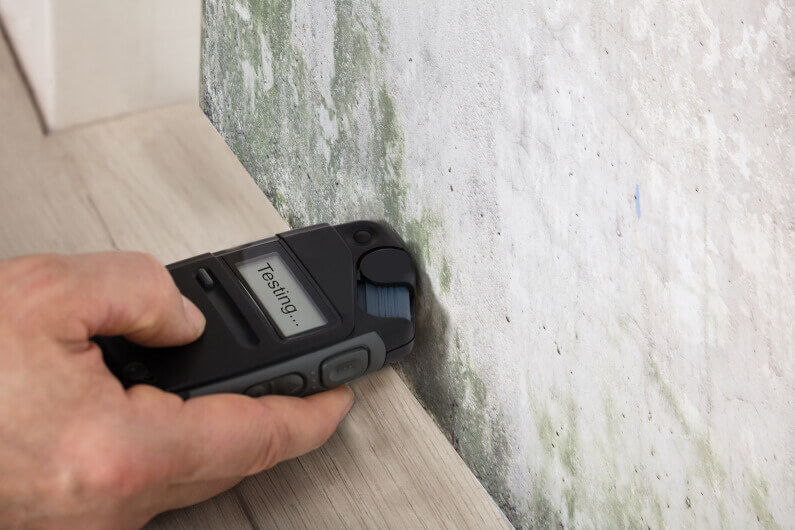If you own a home with a significant amount of drywall, at some point you’re going to find yourself wondering, “How long does drywall last?” The lifespan of drywall can be as short as 30 years, depending on how well it’s maintained.
Whether you’ve been in your home for many years or recently purchased an older home, some parts of your drywall are likely looking worse for wear.
There are some things you can patch (or ignore altogether). But there are several scenarios when you actually need to replace drywall.
Damaged, discolored drywall is a major eyesore. It also decreases the value of your home. It can even be a sign of a breeding ground for mold, mildew, allergens, and bacteria.
Certain repairs you’ll be able to tackle yourself. Patching minor holes and cracks should be no problem for the majority of homeowners.
For drywall installation, you’ll want to entrust your home to the drywall services of a professional. Let’s take a look at the signs it’s time to replace your drywall.
1. Discoloration
For homeowners in humid parts of the country, moisture is a problem for their drywall. Humidity can cause discoloration spots on your walls and ceiling.
Even if you live in a dry climate, you may notice discolored, sagging drywall on the ceiling of your bathroom. If left unaddressed, moisture will continue to build and contribute to the growth of mold and mildew.
If you can remove the source of moisture, excellent. If the moisture is impossible to remove, it’s time to replace the drywall.
That being said, if you can’t get a handle on the moisture eventually, you risk having to replace that portion of drywall over and over.
2. Holes
Most holes you can patch yourself. A small hole from banging a doorknob against a wall, or a hole made by a mouse shouldn’t be a problem. You can patch those over without worrying about the condition of the wall.
But larger holes present a greater problem. They can reduce the strength of the wall itself. Large holes make the structure of the wall vulnerable to forces that act upon it.
If you have any holes larger than five inches across, you need to consider replacing drywall. It’s also a good idea to replace drywall if a confined area has many small holes.
3. Cracks
Did you know drywall cracks can be the result of a misplaced seam? Yes, it’s possible to patch a crack, but not if it affects the structural integrity of the wall. Areas with large cracks require removal and replacement.
Do not try to repair a drywall crack. A drywall professional is required to remove the old drywall and replace it with a new piece. Attempting to do this without an expert present will most likely result in additional damage to your wall.
4. Water Damage
Flooding and major water damage are two scenarios that require immediate drywall replacement. Water causes significant, irreparable damage to walls and ceilings.
Leaving wet walls in your home will encourage the speedy growth of mold, bacteria, and allergens. If you see any sign of water damage on your walls, monitor it closely.
If you see major water damage, you need to act quickly and have the drywall in those areas replaced.
5. Bulges
An area of drywall that bulges or appears to bump out can be a sign of water damage. It’s possible to patch bulges or paint over them.
But in all likelihood, you’ll just be putting a bandaid over the wound and allowing it to fester.
When you notice bulges, bumps, or bubbles in your drywall, the most effective solution is to hire a professional to replace the section of drywall.
6. Splinters
Splinters on drywall are fairly uncommon. Drywall is made of plaster, which does not splinter.
But, sometimes plywood panels get installed as drywall substitutes. When those begin to splinter, it is a sign that the material is aging and is no longer safe. Then you know it is time to replace those panels with fresh drywall.
7. Mold
As mentioned before, allowing the build-up of moisture causes mold to grow. Mold loves a warm, wet climate.
If allowed to persevere, mold will spread behind your drywall and eat away at the organic materials mixed into the plaster. Many types of mold can cause illness, irritate allergies, and even result in death if inhaled too often.
Other Potential Drywall Disasters
In addition to the reasons to replace drywall already mentioned, there are a few potential drywall disasters to consider. Keep an eye out for the following things that could cause damage to your drywall.
Termites
Did you know termites love to eat paper? It’s not only the wood they’re after. Fortunately, termites aren’t big fans of plaster, so they leave that part of the drywall alone.
But, it’s paper that holds drywall together and covers the drywall. When you paint your walls, you’re essentially painting paper. If you get a termite infestation, they’ll delight themselves gorging on your drywall.
Earthquakes
When thinking of earthquakes, your mind might go to the damage a major earthquake could cause. But even small earthquakes can cause structural damage to homes, including cracking drywall.
Foundation Settling
Every home foundation will settle at some point. But unfortunately, not all homes settle evenly. Soft soil is often a culprit in uneven foundation settling.
When homes settle unevenly, it puts a strain on the structure of the home. This can cause damage to many parts of the home, including the drywall.
When to Replace Drywall
There are times when you can patch and other times when you need to replace drywall. You should consider replacing drywall when you notice large holes, cracks, discoloration, water damage, bulges, splinters, and mold.
For professional drywall services in the Miami area, contact Florida Painting today.
